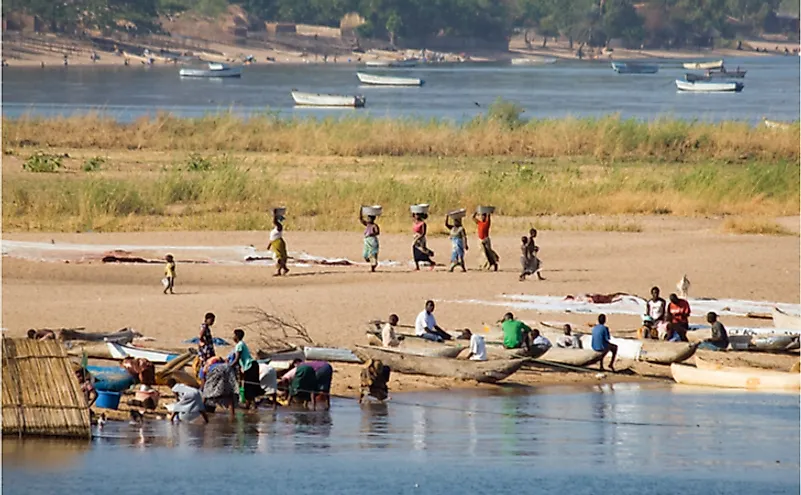What Are The Major Natural Resources Of Malawi?

Malawi is an African country bordering Zambia, Tanzania, and Mozambique. It is a landlocked nation that depends on the neighboring states for access to international water bodies. Malawi occupies 118,000 square kilometers and has a total population of approximately 18 million.
Malawi has a wide range of natural resources including forests, arable land, fish, lakes, wildlife, and minerals.
Forests
Malawi's forests cover 36% of its land area. The major tree species in Malawi's forests include conifers, baobab, miombo, and acacia. The hardwood trees yield wood that is used for a variety of purposes. The wood from these forests supports the large wood carving and furniture industry in the country. Other forestry products in Malawi also bring income to the country.
Land And Agriculture
Arable land is one of the most important natural resources for the largely agriculture-based economy of Malawi. Arable land in the country is both communally and privately owned. Cultivation of crops is for domestic and international use. Agricultural exports include tobacco, tea, sugar, cotton, and coffee. Groundnuts and macadamia nuts are other important agricultural produce. The popular crops grown for domestic consumption in Malawi include maize, sorghum, millet, pulses, soybeans, cassava, potatoes, pigeon peas, and sugarcane, rice, and soybeans. For success in the agricultural sector, the country relies on both rainfall and irrigation. Malawi also engages in horticulture.
Lakes And Rivers
Fishing remains a key economic activity and source of food in Malawi. Lake Malawi is one of the major sources of fish in the country. It is Africa's third-largest lake and is home to hundreds of fish species. Malawi also has several other lakes and rivers that support its fishing industry. Water from them is also used for domestic activities and industrial purpose. Lakes like Lake Malawi also attract tourists, both domestic and international.
Wildlife
The many national parks and other protected areas of Malawi are major tourist attractions in the country. Malawi has a rich biodiversity. Some of the notable fauna of the country include antelopes, klipspringer, zebras, grysbok, giraffe, southern ground hornbills, rhinos, African civets, monkeys, reedbuck, kudu, elephants, yellow baboons, Nile monitors, and numerous bird species.
Minerals
Coal, lime, limestone, graphite, black granite, aquamarine, tourmaline, ruby, sapphire, bauxite, and marble are some of the minerals found in Malawi. Raw and processed minerals are sold in both domestic and international markets. Uranium, bentonite, gemstones, and ornamental stones from Malawi are exported. Malawi also has large unexploited reserves of limestone, uranium, coal, and bauxite. Most recently, oil deposits have been discovered around Lake Malawi. Oil exploration in the lake is currently underway. A gemstone known as zircon has also been newly discovered in Malawi. The estimated mining period for zircon is 20 years. Increase in mineral resources mined in Malawi will result in a significant rise in revenue as well as a higher Gross Domestic Product (GDP).











